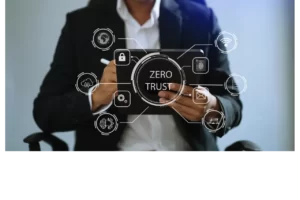Cyber Security 101 – Introduction to Key Concepts
We always succeeded to bring latest technologies and solutions to our respected customers across South India. Our Technical teams are always committed to bring latest technologies to our customers.
As part of this mission uniware brings to latest update on security pain points of our customers.
What is Cyber security?
Cybersecurity or information technology security is the protection of computer systems and networks from the theft of or damage to their hardware, software, or electronic data, as well as from the disruption or misdirection of the services they provide.
There can be three main motives behind cyber-crimes, viz:
- Monetary Benefit: These types of criminals try to hack into the user’s personal or corporate bank details so as to gain monetary benefits out of it. These criminals can create fake ID’s and websites, or even send emails asking personal information to the users. They also may create fake accounts where the use of money is transferred.
- Information: Some of the cybercriminals will try to steal some confidential information that can be sold online marketing sites, or even to some other competitor companies or use it for personal benefits.
- Acknowledgment: Some of them also may not want to benefits out of it, but to showcase their name to the world of their presence.
Our Answers to Cyber Security
- EDR
Protecting computer hardware devices defined as endpoints from threats with customized Endpoint detection and response (EDR) tools and technology. These tools are designed to suspicious activities that are provoked at the endpoints by monitoring it continuously. How it differs from antivirus? Antivirus just detects the malicious activities whereas EDR detects but also secures the end points with security tools such as like firewall, whitelisting tools, monitoring tools, etc. running on client server mode.
- NAC
The resource, role, device and location-based access are now enforced with security with the aid of Network Access Control (NAC) . This implies the enterprises to have access to their network and controlling devices enterprises that are secured and verified
- Privileged Identity Management (PIM)
Protect your Grade- A accounts within your IT environment. This high end security protocol is accomplished with oversight monitoring. Unmanaged and unauthoritative access of super accounts can lead to data loss and information theft
- Privileged Access Management (PAM)
Condensing the attack on the IT surface by implementing Privileged access management with cyber security strategies and technologies that allows only constrained access and permissions for users, accounts, processes, and systems across an IT environment for privileged
- Multi-factor Authentication (MFA)
Accessing a resource or an application with two or more factors for strong identity and assess management. Apart from the usual login credentials such as username and password, additional information will add strength to the security protocol
- SSL VPN
Enabling remote-access VPN capability, using the SSL function that is already built into a modern web browser. Any Internet-enabled location to launch a web browser can be assessed by the user to establish remote-access VPN connections.
- Vulnerability Assessment
Evaluating vulnerabilities across the system and ensuring a highend security protocol that is deployed which not only secures but also detects if the system is weak and susceptible to any known vulnerabilities
- Data Loss Prevention –Preventing end-users from moving key information outside the network through tools that enable a network administrator to monitor data accessed and shared by end users. Detection and prevention of data breaches, exfiltration, or unwanted destruction of sensitive data is achieved through DLP







